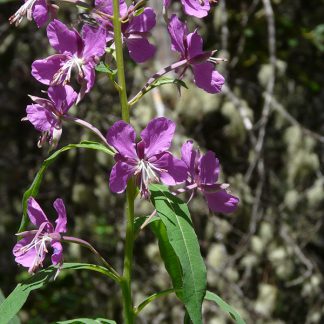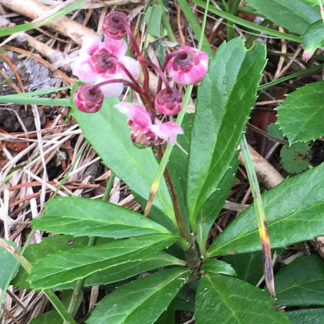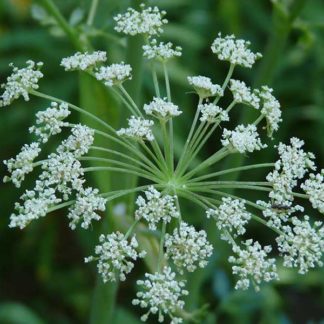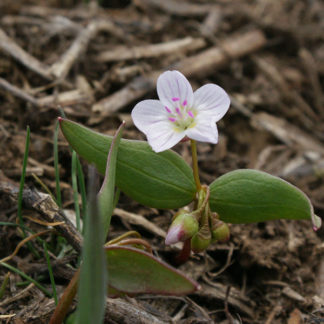native
Showing 49–60 of 282 results
-

Castilleja spp. / two yellow paintbrushes
- look like Indian paintbrushes (which they are), but yellow
- inflorescence bracts possibly lobed
- height ranges from less than 8" to about 15"
- subalpine, alpine and tundra habitats, in clumps or spread out
- linear leaves without lobes, 3 prominent veins
- red to maroon, hairy stems
-

Ceanothus velutinus / snowbrush
- waist-high, exposed evergreen shrub
- aromatic in hot weather or when leaves are crushed
- shiny (sticky) green leaves, ca. 3"; 3 prominent veins
- 4" clusters of teeny white/cream flowers
- in disturbed areas, particularly burned areas
-

Cerastium arvense / field chickweed
- Erect or trailing stems, if you can see them amongst the competition
- Clusters of 1 to many white flowers with 5 deeply cleft petals
- Petals much longer than the green sepals
- Opposite, linear, sessile leaves - not very long
- Cylindrical seed capsules with 10 teeth at top
-

Cercocarpus ledifolius / curl-leaf mountain mahogany
-

Chaenactis douglasii / Douglas dusty maiden
- leaves "woolly" or hairy; intricately divided
- leaf and lobe tips curled or twisted
- flowering stems coated with "cobwebby" hairs
- flower heads of white/pinkish tubular disk florets in a glandular cup
- forked styles protrude past tubes
- often in rocky areas and crevices
-

Chamerion angustifolium / fireweed
- bright pink flowers on tall inflorescence (raceme)
- flowers mature from bottom to top
- four petals
- spiral leaf arrangement - lance-shaped leaves have smooth edges
- pod-like seed capsule releases seeds to the wind
-

Chara contraria / Chara
- plant-like rooted aquatic alga
- green "stem" with whorls of green "leaves"
- rough feeling due to carbonate encrustations
- river bottom but other waters, including stock tanks
-

Chimaphila umbellata / pipsissewa
- small herb/forb
- shiny, toothed lance point leaves
- half-inch, pink and white, upside down flowers
- flowers in umbel like cluster
- flowers with minimally visible style
-

Cicuta douglasii / water hemlock
- HIGHLY TOXIC
- primarily on continuously wet soils, e.g. ditches, stream banks, pond margins, marshes.
- white compound umbel inflorescence typical of the Apiaceae/Umbelliferae
- multiply compound leaves with prominent veins ending in notches between lobes
-

Cirsium hookerianum / Hooker’s thistle
- clearly a thistle, but with white flowers
- native but not plentiful
- seen at Mahogany Creek in mid-August
-

Cirsium scariosum / elk thistle
- usually tall, quite prickly thistle with deeply lobed, spiny leaves
- large, lavender (pink to purple) flowers hidden by the long leaves
- covered with white hairs giving it a silvery look overall
- in moist areas, in full sun
-

Claytonia lanceolata / lanceleaf spring beauty
- small, very early spring, ephemeral
- 5 white or pink-ish petals with pink/purple stripes
- pair of opposite leaves at mid-stem; lanceolate
Showing 49–60 of 282 results